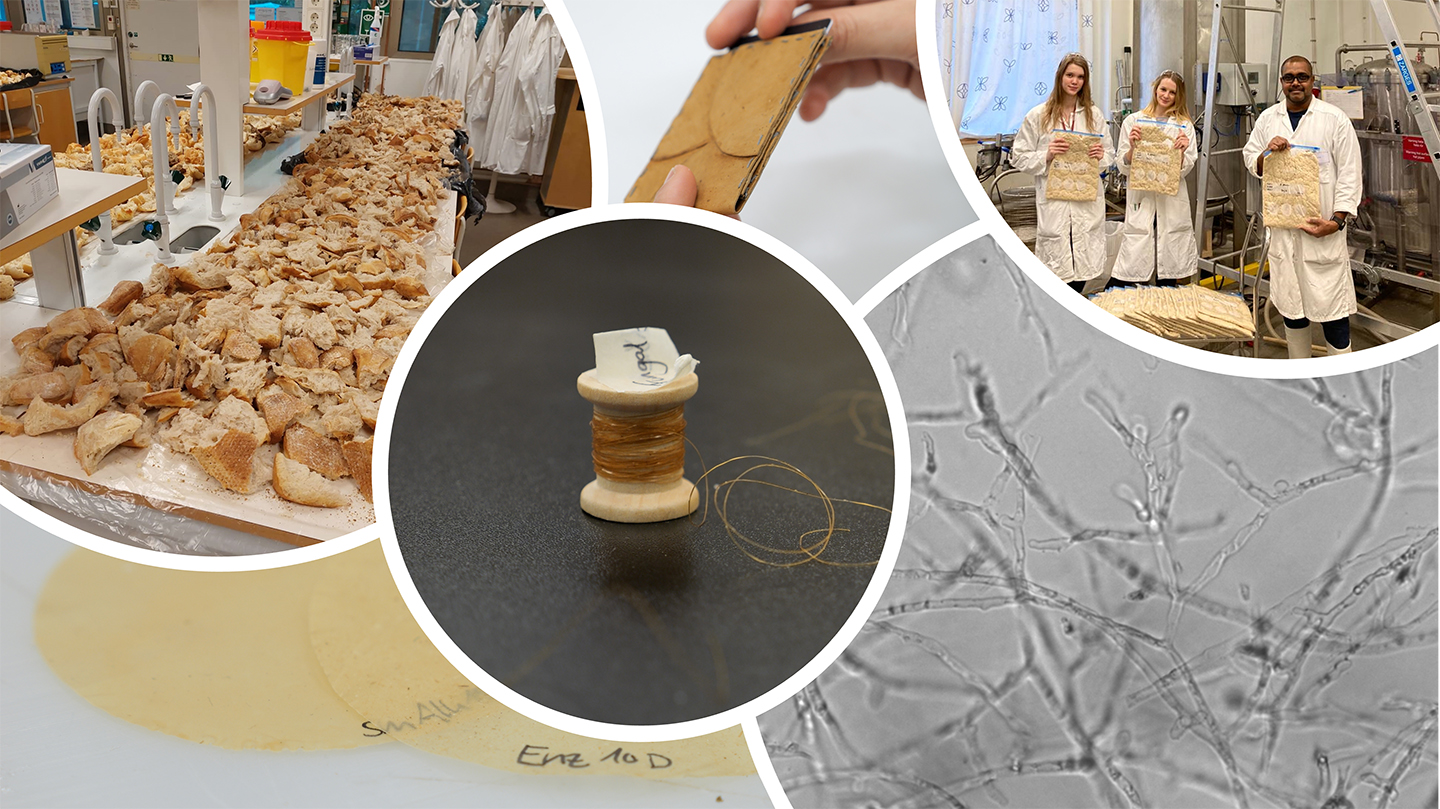Sustainable Fungal Textiles: A novel approach for reuse of food waste
Start date: 2019-01-01
End date: 2023-01-16
On the other hand, bread waste is a very large fraction of food wastes in Swedish supermarkets which significantly contributes to the environmental footprint. This project introduces a new approach to address both problems by exploring the potential of filamentous fungi, grown of bread waste, for production of a new generation of sustainable textiles.
In other words, the project contributes to the re-use of the food waste in the society through production of textiles. The fungal textiles are good candidates to reduce the pollutions generated by the textile industry.
We aim at implementation of the production process to the existing infrastructure in the textile and paper industries to speed up the uptake of the fungal textiles in the society. Yarns and Non-woven fabrics will be prepared from the fungal cell wall fibers using wet spinning and wet laid process, respectively. We will avoid usage of toxic chemicals that normally are done within the textile industry.
The fungal cultivation conditions, as well as the textile production process will be optimized to enhance the characteristics of the fungal textiles. The potential of the fungal textiles for apparel, home textile, and medical textile applications will be investigated. As a byproduct of the fermentation process, fungal proteins will also be produced that can potentially be used for food or feed applications.

Photo collage showing pieces of bread waste left for drying, filamentous fungi under microscope, prototypes of fungal yarn, leather like material and plastics. Researchers Alice Lind, Sofie Svensson and Kanishka Wijayarathna in the Biotechnology lab, holding bags of harvested fungal biomass. Photos by Kanishka Wijayarathna (bread waste), Erik Norving (prototypes), Andreas Nordin (researchers) and Sofie Svensson (microscope).
Publications
- Sofie E Svensson, Jorge A Ferreira, Minna Hakkarainen, Karin H.Adolfsson, Akram Zamani (2021) Fungal textiles: Wet spinning of fungal microfibers to produce monofilament yarns. Sustainable Materials and Technologies, volume 28, July 2021.
- Sofie E Svensson, Ludmila Bucuricova, Jorge A Ferreira, Pedro F Souza Filho, Mohammad J Taherzadeh, Akram Zamani, Valorization of Bread Waste to a Fiber-and Protein-Rich Fungal Biomass, Fermentation 7 (2), 91.
- Wijayarathna, E.R.K.B., et al., Fungal textile alternatives from bread waste with leather-like properties. Resources, Conservation and Recycling, 2021: p. 106041.
- Benedikt Maria Köhnlein, M., et al., Bioconversion of food waste to biocompatible wet-laid fungal films. Materials & Design, 2022. 216: p. 110534.
- Sofie E. Svensson, Ana Osorio Oliveira, Karin H. Adolfsson, Ivo Heinmaa, Andrew Root, Nahid Kondori, Jorge A. Ferreira, Minna Hakkarainen, Akram Zamani, Turning food waste to antibacterial and biocompatible fungal chitin/chitosan monofilaments, International Journal of Biological Macromolecules, Volume 209, Part A, 2022, Pages 618-630
- Natacha Perrin, Ghasem Mohammadkhani, Farshad Homayouni Moghadam, Cedric Delattre, Akram Zamani, Biocompatible fibers from fungal and shrimp chitosans for suture application, Current Research in Biotechnology, Volume 4, 2022, Pages 530-536.
- Kanishka B Wijayarathna, E. R., Mohammadkhani, G., Moghadam, F. H., Berglund, L., Ferreira, J. A., Adolfsson, K. H., Hakkarainen, M., Zamani, A., Tunable Fungal Monofilaments from Food Waste for Textile Applications. Global Challenges 2023, 2300098. https://doi.org/10.1002/gch2.202300098







